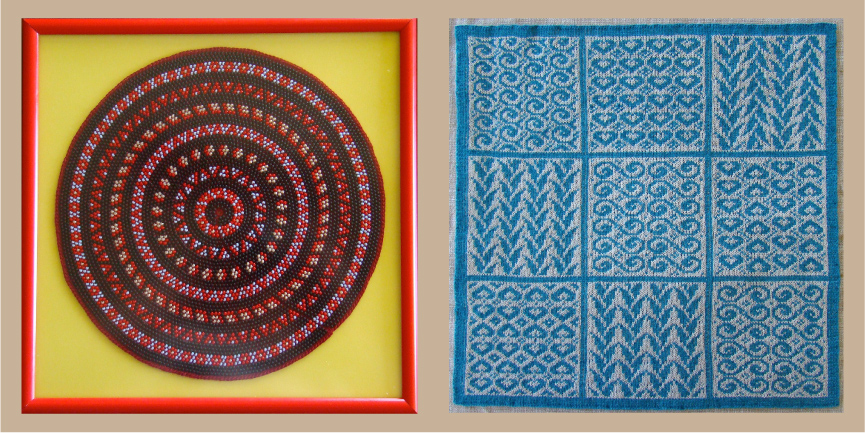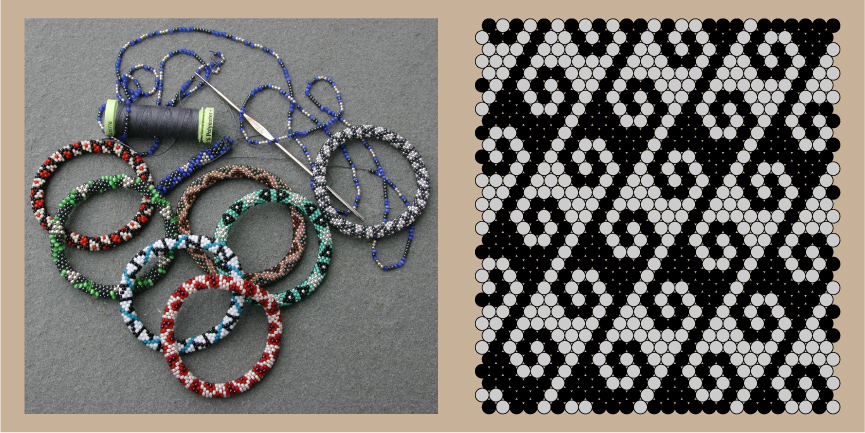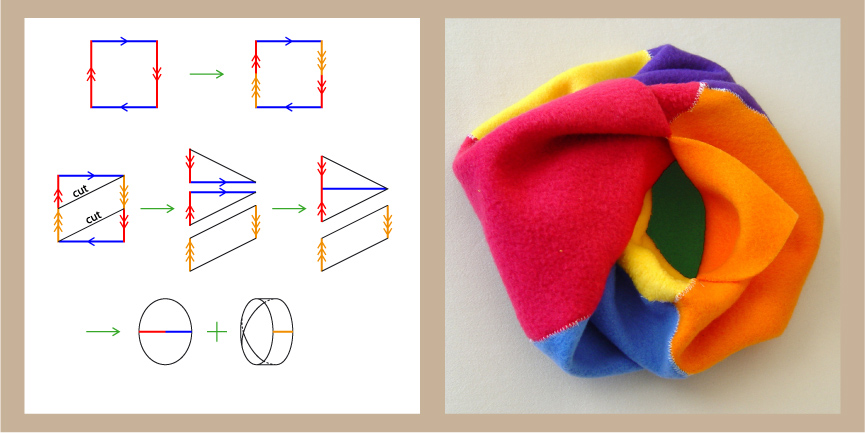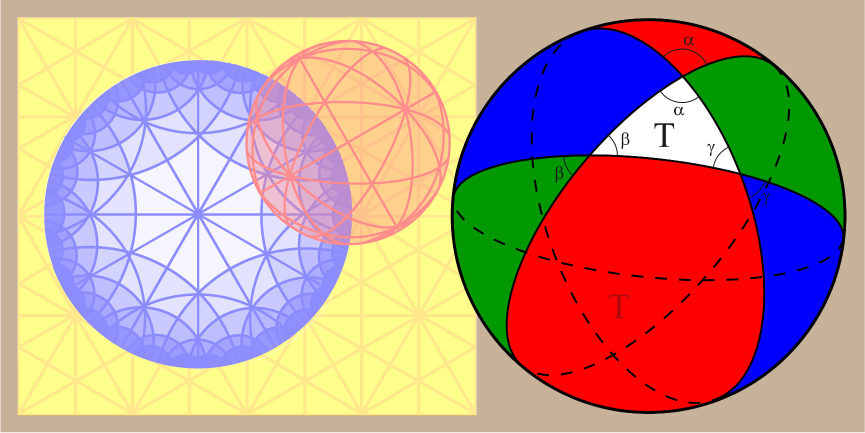These are my current expository talks, suitable for a range of audiences. They all incorporate elements of my work in mathematics and the arts, feature lots of colorful pictures, and include three-dimensional visual aids. Clicking on a title will reveal a sample abstract and more information about the talk.
If you would like me
to speak at your institution, please contact me at sgoldstine![]() smcm
smcm![]() edu. A speaker bio is linked at the bottom of this page.
edu. A speaker bio is linked at the bottom of this page.
In this talk, we will explore the mathematical theory of symmetry and its application to traditional and contemporary fiber arts. No special background in math or fiber arts is required, and there are myriad ideas and images here for both novices and experienced practitioners of mathematics and of knitting.
Alternate Title
Symmetric Threads: Classifying Symmetries in the Fiber Arts
In principle, the primary form of this talk is suitable for a general audience, as it is driven by mathematical artworks and hence packed with pretty pictures. However, it will resonate best with an audience that has the mathematical instincts and focus to search for geometric patterns in the various photographs and diagrams. With an advanced undergraduate audience, we can delve more deeply into the underlying group theory.
Alternately, I can center the art and de-emphasize the math, but I am less inspired to travel a significant distance for this version unless the venue has a particular connection to fiber arts.
Mechanics
For this talk, I need a computer projector. I also exhibit and pass out models, so
the room needs not to be too dark.

Many years ago, I embarked on an unexpected journey into the realm of mathematical beading. Along the way, my colleagues and I uncovered fascinating connections between mathematics and art, and I will show you a few of the highlights of our travels into the realms of geometry, number theory, topology, and abstract algebra. Together, we will look at how geometry and modular arithmetic intersect in bead crochet, the structure of symmetry, the aesthetic principles of jewelry design, and bracelets. Lots and lots of bracelets.
No special mathematics background is needed for this talk.
Level
High School and up.
The level of this talk is adaptable, but I usually pitch it to undergraduates or enthusiastic younger students. Any audience who is open to looking for numerical patterns and playing with geometric intuition can appreciate the mathematical content in this general version. With an advanced undergraduate audience, we can delve into some abstract algebra and topology.
Mechanics
For this talk, I need a computer projector. I also exhibit and pass out models, so
the room needs not to be too dark.

In the mathematical wonderland of topology, we can hold the entire world in a bottle or in a purse. We will assemble this purse, dissect it, rearrange it, and see what it has to tell us about how our world fits together.
Alternate Titles
Fortunatus’s Purse and the Wealth of the World
Fortunatus’s Purse: a many-colored story
The talk uses some topological gluing diagrams and a little geometry in three-space, all of which are carefully explained during the talk, but this might be a stretch for an early high school audience. An undergraduate audience should follow all of the material and will find lots of fascinating new ideas.
Mechanics

If you know that the sum of the angles in a triangle is 180 degrees, then you can follow the math in this talk.
Level
High School and up.
The claim in the abstract that it is sufficient to know the angle sum in a Euclidean triangle is accurate. At some points in the talk I do use radians instead of degrees, but not in a way that involves any higher math.
Of course, the claim is also ironic, since the talk includes non-Euclidean triangles, whose angle sum is not 180 degrees.
Mechanics
For this talk, I need a computer projector. I also exhibit and pass out models, so
the room needs not to be too dark.
